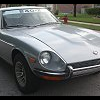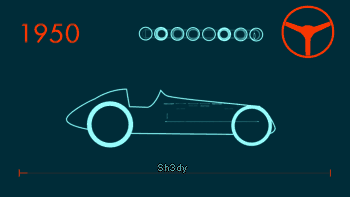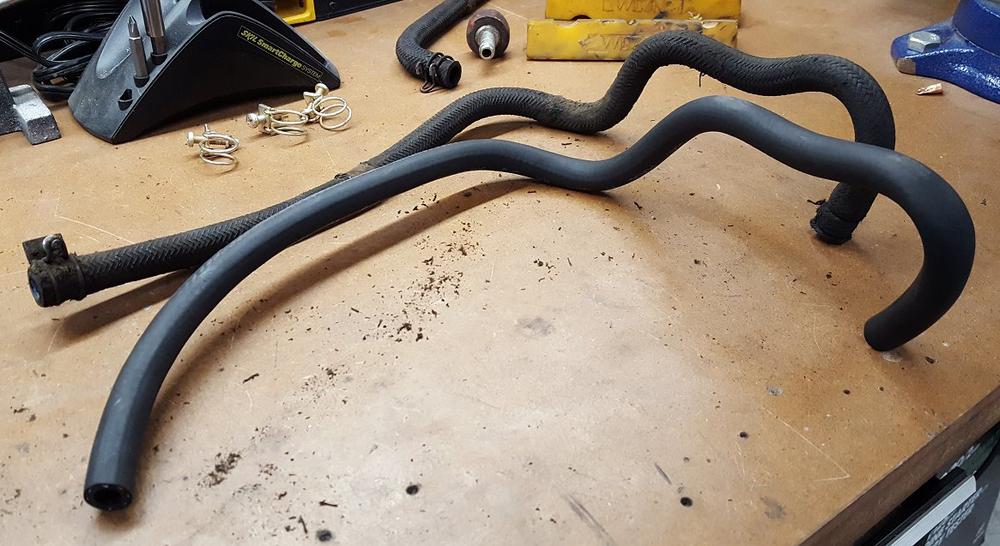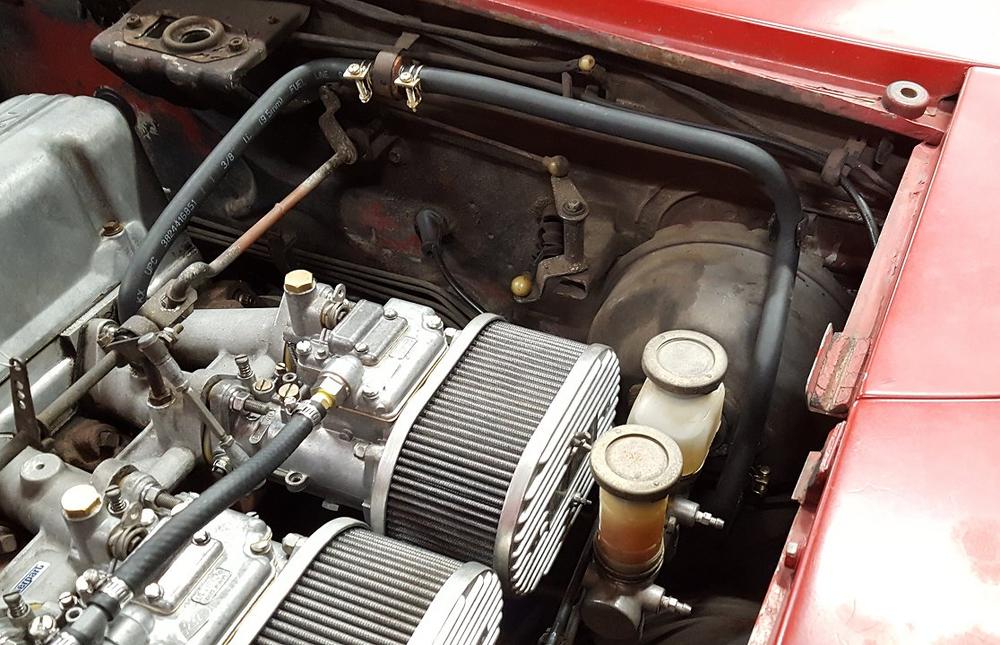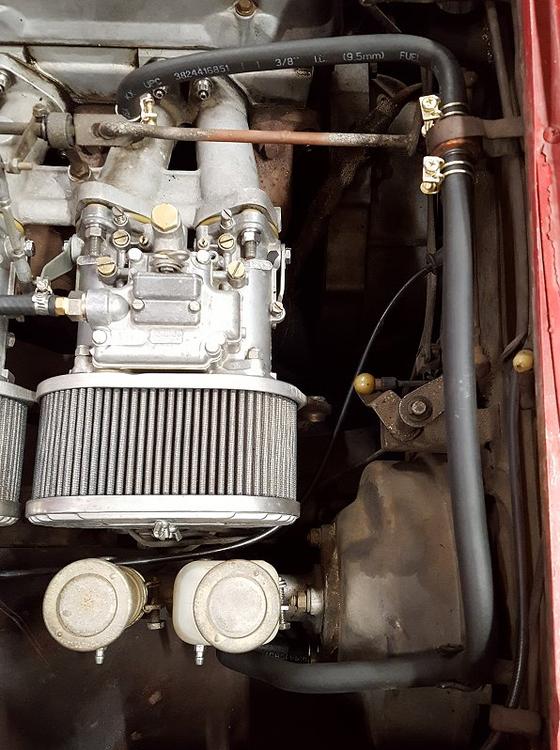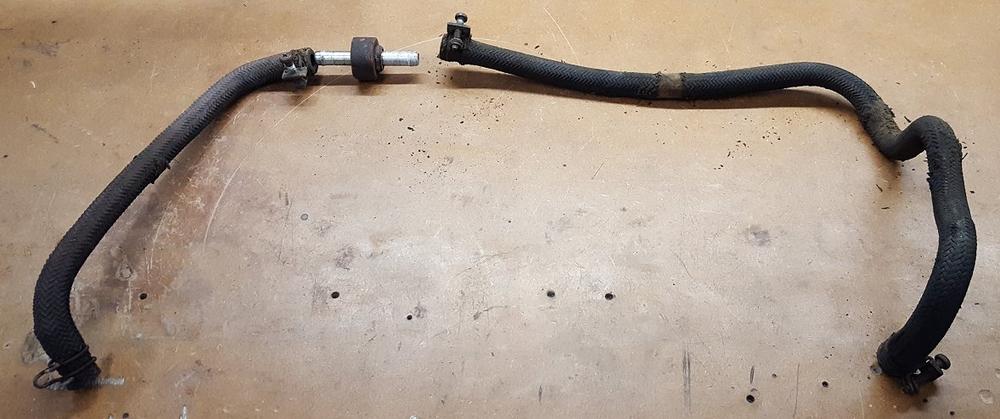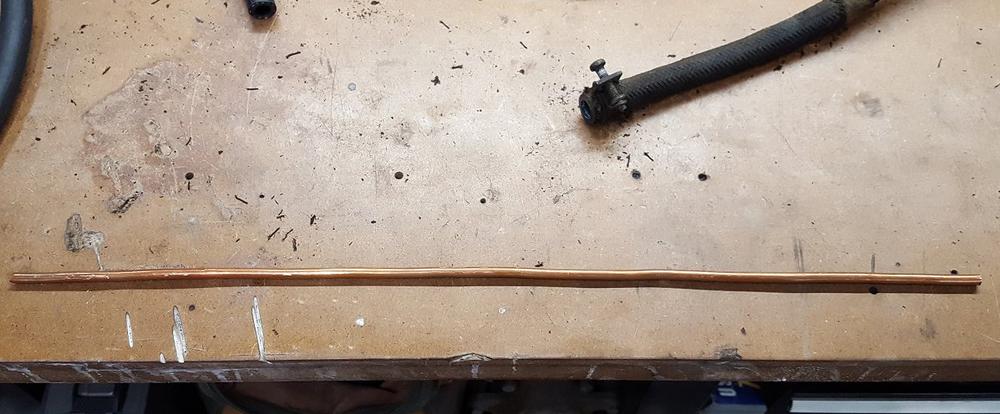Today i was finally able to complete a little project on which i've been working over the past few weeks. I completely reworked the Inspection Lamp.
Remember a few weeks ago when i posted this pic? This is how it all started. Rusty, Painted over a few times, and in bad shape. didn't even work:
Of course started to disassembly everything first
Then had the housing tubmlered to remove old paint, dirt and rust (picture has other parts included as well, which don't belong to the inspection lamp):
And got it zinc-replated and yellow passivated to get back the origina look. Then started to source the missing parts.
Even if i'm in the business i failed to find an original green twin-wire with the original thickness. but since the original wire was still in good shape i decided to just clean and keep it.
The bulb was a bit of a headscratcher too. but after i figured out the Keyword was "BA9s" (9mm bajonett-socket with single base connector) it was easy to find a fitting bulb, 12V, 8W as the manual states. Nowadays you even could replace it with a lot of less-power consuming LED bulbs, but i decided to keep it oldschool in this case
The switch was the most tricky part. the original was toasted (see left). It could be saved and restored but then you still have a completely brittly 40 year old piece of plastic in an outdated electronic design, so i decided to replace it with a newer style switch. The first generation of inspection lamps had a metal switch too, so it's not a completey wrong look.
The switch needs a 12mm thread, but must be small enough to fit inside the housing (most 12mm threaded switches are too big) and it should have the little notch in the thread to secure it properly in correct position. After trying various options i figoured out this one would fit perfectly (Available at farnell) http://www.atakel.com/urun/apem-5000-series-miniature-toggle-switches/EN/
While the original one is an ON-OFF switch, this one is an ON-ON switch, but if you remove one of the outer pins you have an ON-OFF function again:
First the little nipple has to minimized by 0.5mm or so to fit the slightly smaller notch in the new switch:
Then prepared all the cables. Cleaned them first with a rough side of a dish cleaning sponge, cut off the ends, removed insulation ca 1mm at each end with a special tool and then pre-soldered the ends to make it easier to solder it later.
It probably helps if you have a full high-end soldering workstation like i have at my office and 20+ years of daily soldering routine skills
All parts ready? Here we go. The fun part begins - assembly (got a new replica lens and rubber insulator from ebay, plus additionally a piece of black heat-shrinking tube and some red electronic wrapping tape).
First i installed a new rubber insulator grommet on the bottom of the back housing. the original one was falling apart by just looking at it. New ones can be found easy in any electronis speciality shop.
The removed the old wire-end from the connecting plate and cleaned it.
resoldered the new wire-end to it and cleaned it with flux remover (removes flux from the soldering, which may decrease the electric connectivity! see bottle in the back)
Soldered the other wire back to the hook and attached some black heat-shrinking tube like it was in the factory setup:
Next was soldering the wires to the switch and protect the solderings with some black heat-shrinking tube:
Also added the red electrical tape as it was in my factory setup (it goes inside where the clamp is to protect wires):
Soldered the wire back to the little Clamp
And installed the clamp back to the bottom and secured the cables inside with it. Done
Apply 12V DC to it (ground to the housing, plus to the red wire, switch on - YAY!
assembled it to gether and still everything works as it should:
So here's the result. Quite the difference when compared to the first pictures, which was the same item!
Spent quite a few hours sourcing parts and getting everything cleaned and so on, but honestly it was totally worth the work





